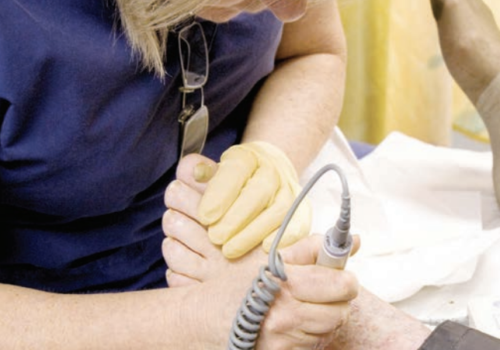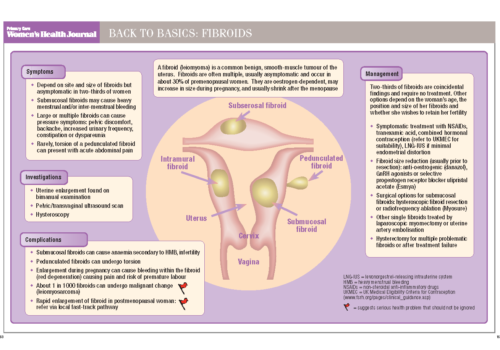Acute kidney injury (AKI) is becoming increasingly common. Patients at greatest risk are the elderly with chronic kidney disease (CKD) and other long-term conditions such as hypertension, diabetes and cardiovascular disease. AKI carries a poor prognosis yet 30% of cases are preventable. In primary care we can help prevent AKI by empowering patients to take drug holidays—that is, temporarily stopping medications that become harmful to the kidneys during episodes of acute illness.
Dementia: Making a difference in primary care
Dementia is a term used to describe a syndrome that can be caused by several illnesses, but the result is a decline in a person’s abilities to function socially, mentally and in relation to the everyday activities of living. The condition is having an increasing impact on individuals, families and care services as the UK population ages. However, practice nurses can help make the experience of living with dementia more positive for the patient and their families or carers.
Why – and when – to check thyroid function
Sending samples to the laboratory for investigation is so routine in primary care that it is easy to take these tests for granted. But, as this new series highlights, it is important to understand the purpose of each test and how to act on the results. This article examines thyroid function tests (TFTs), which are an essential part of diagnosing and treating thyroid disease.
Get to grips with the ankle brachial pressure index
Peripheral arterial disease (PAD) has had a lower profile than other vascular diseases, but it is moving up the agenda following recent publication of guidelines from the National Institute for Health and Clinical Excellence (NICE). Take a look at NICE’s priorities for implementation, and you will see that using the ankle brachial pressure index (ABPI) to check for PAD is set to become part of routine cardiovascular risk assessment in primary care.
Taking the mystery out of peripheral arterial disease
Peripheral arterial disease (PAD) forms part of the same generalised vascular disease as coronary heart disease and cerebrovascular disease. Recent National Institute for Health and Clinical Excellence (NICE) guidelines emphasise the importance of a standardised approach in primary care. The aims of this article are to provide an update for practice nurses, and to highlight the importance of asymptomatic PAD as an independent risk factor for cardiovascular morbidity and mortality.
Introducing dapagliflozin for type 2 diabetes
Dapagliflozin (Forxiga) is the first in a new class of oral antidiabetic drug that has been given the go-ahead for marketing in Europe, including the UK. Described as a sodium glucose cotransporter 2 (SGLT2) inhibitor, this new preparation works on the kidneys to lower blood glucose. What does this new drug have to offer and how can it potentially help our patients with type 2 diabetes?
Editorial: Supporting women through menopause
All women, if they live long enough, will go through the menopause. For some women, especially if they have few symptoms, the menopause transition comes as a welcome relief from menstruation and the possibility of pregnancy. Others experience disabling menopausal symptoms, and may feel psychological distress from their loss of fertility. Supporting these women is one of the most rewarding parts of clinical practice, especially as there is now a much more balanced approach, at least among knowledgeable clinicians,1 to the risks and benefits of hormone replacement therapy (HRT).
Pinpointing the best treatments for UTIs
Urinary tract infections (UTIs) are very common, affecting about half of women at least once in their lifetime. Although UTIs can be painful and uncomfortable, they are usually limited in duration and treatable with antibiotics. The challenges are to manage the one in five women who experience recurrent UTIs, and to avoid complications in patients who do not respond to treatment.
Which HRT for which woman?
The gold-standard treatment for menopausal women experiencing symptoms of oestrogen deficiency is hormone replacement therapy (HRT). HRT prescribing should largely be initiated, and managed, in primary care. This article takes a step-wise approach to looking at the factors to take into account, and the questions to ask, when deciding which HRT to prescribe appropriately for which woman.
Back to Basics: Fibroids
Managing anogenital warts in primary care
The most common sexually transmitted infection in the UK, anogenital warts are caused by the human papilloma virus (HPV). They are usually painless, but women often find their presence unsightly and distressing. Choice of treatment depends on the type, number and distribution of the warts, and the patient’s preferences. Relapse is common, but women can be reassured that the vast majority of lesions are benign.
Ensure success with the contraceptive implant
The popularity of the contraceptive implant among younger women has contributed greatly to the recent increase in the use of long-acting reversible methods. Based on his 12 years of experience in counselling patients and fitting the implant, the author advises on how to avoid the pitfalls to ensure success with this method of contraception.























